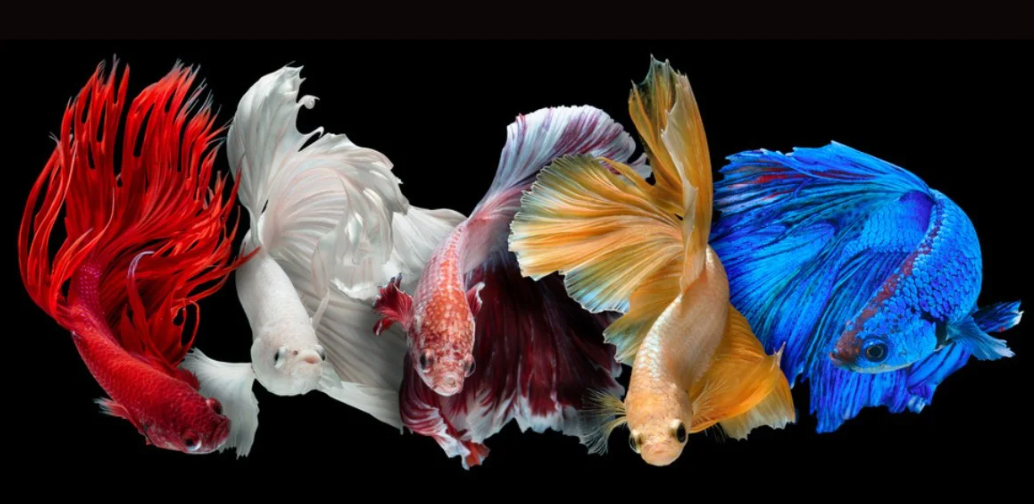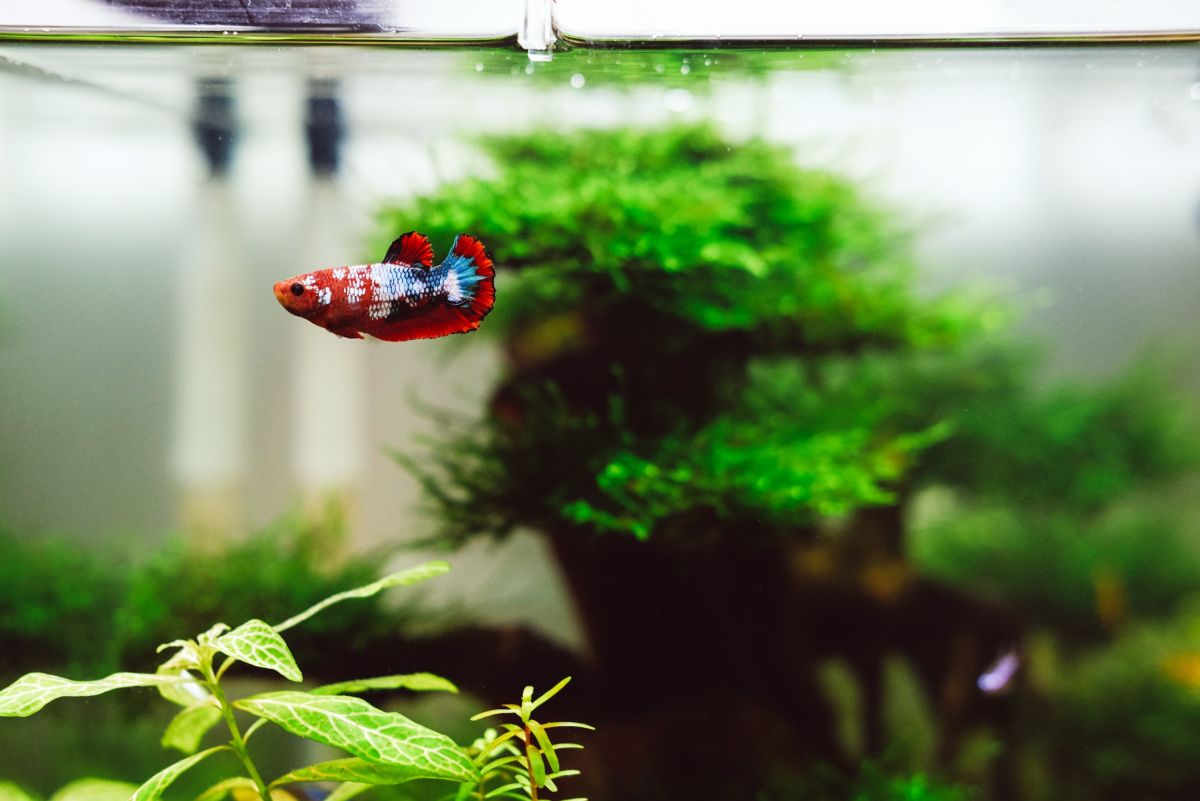Learning
How to Take Care of a Betta Fish (Siamese Fighting Fish)

Betta fish, also known as Siamese fighting fish, are stunning and vibrant aquatic pets that require proper care and maintenance to thrive. With their long, flowing fins and vibrant colors, Betta fish have become a popular choice for fish enthusiasts.
However, providing the right care is essential for their well-being and longevity. In this ultimate guide, we will explore the various aspects of betta fish care, from setting up the aquarium to feeding, health maintenance, and more. Whether you’re a new betta fish owner or looking to improve your existing care routine, this guide will provide you with the knowledge and tips you need to keep your betta fish healthy and happy.
Betta fish, scientifically known as Betta splendens, are native to Southeast Asia, particularly Thailand, Cambodia, and Vietnam. They are known for their aggressive behavior, which is why they are often referred to as “fighting fish.” In their natural habitat, male bettas engage in territorial battles, displaying their vibrant fins as a sign of dominance. However, when kept in captivity, proper care is necessary to ensure they live a comfortable and stress-free life.
Setting up the Aquarium
Before bringing home a betta fish, it’s crucial to set up the perfect aquarium environment. The following steps will guide you in creating an ideal home for your betta:
Choosing the Right Tank Size
Betta fish require adequate space to swim and explore. A tank size of at least 5 gallons is recommended, although larger tanks are even better. Avoid keeping bettas in small bowls or tiny tanks, as they restrict their movement and can lead to stress and health issues.
Selecting Suitable Decorations
When decorating the betta fish tank, it’s important to consider their natural habitat. Bettas prefer densely planted tanks with hiding spots and resting areas. Choose live or silk plants that won’t damage their delicate fins. Avoid using plastic plants with sharp edges that could harm your fish.
Setting Up the Filtration System
A filtration system is essential to maintain clean and healthy water for your betta fish. Opt for a gentle filter with a low flow rate to prevent bettas from being pushed around by strong currents. Ensure the filter is properly cycled before introducing your fish to the tank.
Regulating Temperature and Lighting
Betta fish are tropical fish and thrive in warmer water temperatures. Maintain the water temperature between 76°F and 82°F (24°C – 28°C) using an adjustable heater. Provide a suitable lighting system with a natural day and night cycle to mimic their natural environment.
Water Conditions
Maintaining proper water conditions is vital for the overall health and well-being of your Siamese Fighting Fish. Here’s what you need to know:
Importance of Clean Water
Clean water is crucial for Siamese Fighting Fish as they are sensitive to poor water quality. Regular maintenance, including water changes and filtration system cleaning, helps remove toxins and waste that can harm your fish.
Appropriate Water Parameters
Monitor water parameters such as temperature, pH level, ammonia, nitrite, and nitrate levels. Betta fish prefer a slightly acidic to neutral pH range of 6.5 to 7.5. Ammonia and nitrite should be maintained at zero levels, while nitrate should be kept below 20 ppm.
Regular Water Testing
Test your aquarium water regularly using a reliable water testing kit. This will help you identify any potential issues, allowing you to take corrective measures promptly.
Water Changing and Maintenance
Perform regular partial water changes, replacing 25% to 50% of the water every week. Use a de-chlorinator to remove chlorine and chloramine from tap water before adding it to the tank. Be gentle when siphoning the water to avoid stressing your Siamese Fighting Fish.
Feeding and Nutrition
Providing a balanced and nutritious diet is essential for the health and vitality of your betta fish. Consider the following guidelines:
Understanding Betta Fish Diet
In their natural habitat, betta fish feed on small insects, larvae, and zooplankton. They are primarily carnivorous and thrive on a high-protein diet.
Types of Betta Fish Food
Commercial betta fish pellets or flakes are readily available and provide the necessary nutrients. Look for high-quality fish foods specifically formulated for bettas. You can also supplement their diet with frozen or live foods such as brine shrimp, daphnia, or bloodworms.
Feeding Schedule and Portion Control
Feed your betta fish small amounts of food 2-3 times a day. Only give them what they can consume within 2-3 minutes to prevent overfeeding, which can lead to obesity and health problems.
Supplementing Diet With Live or Frozen Foods
Offering live or frozen foods occasionally can provide enrichment and variation in their diet. However, ensure these foods are safe, properly cleaned, and free from any potential contaminants.
Tank Mates and Compatibility
While betta fish are known for their aggressive behavior, they can coexist with certain tank mates under the right conditions. Consider the following:
Choosing Compatible Tank Mates
When selecting tank mates for your betta fish, it’s important to choose species that are peaceful and can coexist harmoniously. Avoid keeping bettas with fin-nipping or aggressive fish that may stress or injure them.
Avoiding Aggressive Fish
Avoid placing bettas with fish known for their aggressive behavior, such as other male bettas, cichlids, or fin-nipping species like tiger barbs. These can lead to territorial disputes and harm to your Siamese Fighting Fish.
Creating a Peaceful Environment
Choose peaceful fish species that prefer similar water conditions and have compatible temperaments. Some suitable tank mates for bettas include small schooling fish like tetras, rasboras, and peaceful bottom-dwellers like Corydoras catfish or snails.
Monitoring Fish Behavior
Observe the behavior of your Siamese Fighting Fish and their tank mates closely. If any signs of aggression or stress are detected, such as chasing, nipping, or hiding, it may be necessary to separate them to ensure the well-being of all the fish.
Health and Disease Prevention
Maintaining the health of your Siamese Fighting Fish involves regular monitoring and preventive measures. Here are some key points to consider:
Signs of a Healthy Betta Fish
A healthy Siamese Fighting Fish should have vibrant colors, clear eyes, and an active swimming pattern. They should show interest in food, breathe comfortably, and have intact fins. Any significant changes in behavior or appearance may indicate an underlying health issue.
Common Diseases and Their Symptoms
Betta fish are susceptible to various diseases, including fin rot, ich, and fungal infections. Be aware of symptoms such as torn or discolored fins, white spots, lethargy, or loss of appetite. Promptly address any signs of illness to prevent the spread of disease.
Quarantine Process for New Fish
Before introducing new fish to your betta’s tank, it’s important to quarantine them in a separate tank for a few weeks. This helps prevent the spread of diseases or parasites to your Siamese Fighting Fish. Monitor the new fish closely for any signs of illness during this quarantine period.
Maintaining Good Hygiene
Keep the tank clean and well-maintained to prevent the buildup of waste and harmful bacteria. Regularly remove uneaten food, and debris, and perform water changes as needed. Avoid overfeeding, as excess food can contribute to poor water quality.
Conclusion on Siamese Fighting Fish
Taking care of a betta fish aka Siamese Fighting Fish requires attention to detail and a commitment to providing a suitable environment. By setting up the aquarium correctly, maintaining optimal water conditions, providing a balanced diet, and ensuring proper handling and interaction, you can promote the health and well-being of your betta fish.
Remember to choose an appropriate tank size, select suitable decorations, set up a filtration system, and regulate temperature and lighting. Maintain clean water conditions, monitor water parameters, and perform regular water changes. Provide a balanced diet and consider compatible tank mates for your betta fish.
Additionally, focus on maintaining their health and preventing diseases through regular monitoring, quarantine procedures, and good hygiene practices. Implement a cleaning and maintenance routine for the aquarium, and handle and interact with your betta fish gently to minimize stress.
If you’re interested in breeding betta fish, ensure you understand the process and provide the necessary conditions for successful breeding. Lastly, be aware of common myths and misconceptions about betta fish care and rely on accurate information to provide the best care for your fish.
By following these guidelines and providing a suitable and nurturing environment, you can ensure that your Siamese Fighting Fish thrives and lives a healthy and fulfilling life.



































